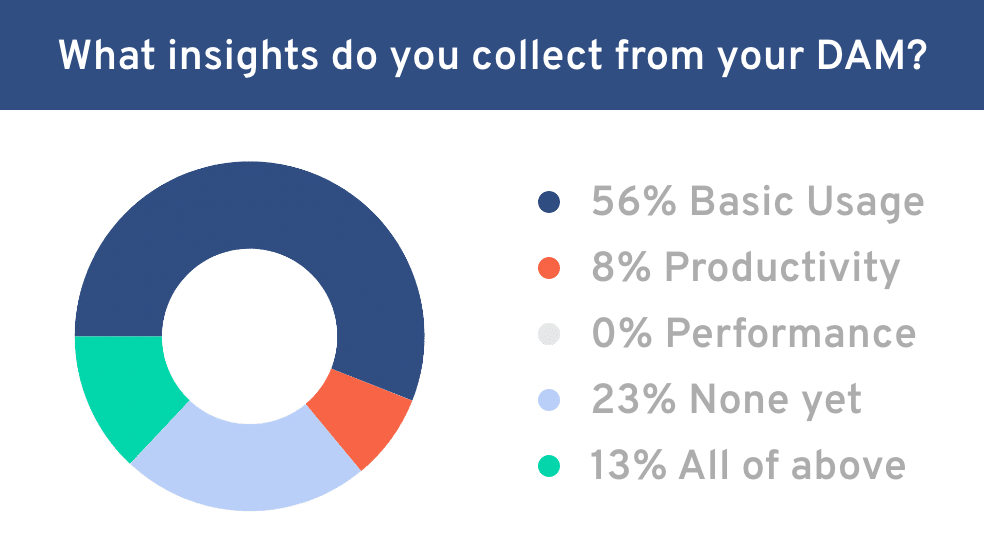
You may not recognize the name Brown-Forman off the top of your head, but you certainly know their brands – Jack Daniels, Woodford Reserve, Old Forester, and Finlandia, just to name a few.
This is a global CPG company that owns and operates some of the most recognized fine spirit and wine brands in the world, and you’ve no doubt been exposed to their content – either at local establishments or through various digital channels.
What you might not know is that Brown-Forman utilizes the Tenovos digital asset management (DAM) platform to manage their creative asset lifecycle across the organization and all of their brands, from ideation and collaboration all the way to distribution of content.
We recently hosted a webinar where the company shared how they’re using DAM as the central technology in their ecosystem to manage digital assets. We thought it would be interesting to share some key takeaways from the webinar, which you can also watch in its entirety here.
Let’s dive in!
DAM Should Enable Teams to Create and Deliver Great Content
As a global company, Brown-Forman has recognized the opportunity to both leverage content from their global brand team across the entire organization, as well as identifying content from local brand and marketing teams that can be impactful in other markets.
But how do they achieve it?
The answer is through their DAM. Brown-Forman uses Tenovos as their single source of truth for digital assets. And while some organizations may be tempted to set up the DAM to serve their global teams only, Brown-Forman has decided to address the needs of all their stakeholders within the platform.
What this means is that both the global, and local brand and marketing teams, have access to the platform. It allows them to engage with their various partners – retailers and agencies for example – and share assets through the DAM.
Then, if the global team has created something for the entire organization to leverage it can be found easily. And likewise, should a local team create something of wider value to the organization, it can be surfaced and circulated with ease.
At the end of the day, Brown-Forman says the entire goal of this configuration is to “capture the amazing creative we’re generating across the organization.”
Creating Content with Purpose
Brown-Forman manages hundreds of thousands of assets in their DAM, and a big part of their program is monitoring how those assets are being used.
They track things like download rates, reuse rates, usage, and uploads, looking to understand what content is being used, what isn’t, and why.
The idea here is straightforward: while the need for content across their company is growing, it’s important that content doesn’t get created just for the sake of it. Content must have a purpose, and so they’re always looking in their library to ensure the right content is being created by their teams.
Some ways they’ll gain that insight is by looking into how people search for content, and what they find as a result. It sounds like an exercise in metadata and search optimization (and it is that), but it also provides insight into what content is needed, and maybe what isn’t.
This allows them to focus their asset creation on the content people need, based on the data they monitor in the system. It helps them improve content findability, while also curating assets for their users that is truly relevant to them.
KEY INSIGHT: If you want people to reuse content, then you have to give them access to reusable formats.
It’s not realistic to expect an asset to be reused exactly how it was originally created. The Brown-Forman team allows raw assets and formats to be included in the DAM to encourage users to reuse assets and adapt them to their needs.
Digital Asset Management Is Central in the Tech Ecosystem
Brown-Forman has realized that they’re constantly moving assets and data between systems. It’s constant.
You can think of it in terms of creative workflows, for example, where a final asset is in the DAM but needs to be adapted for a new campaign. Now it moves to a different system to be revised and re-uploaded back into the DAM.
But it’s often more than just one system for enterprise tech ecosystems. You may have technologies where you store data, like a product information management (PIM) system or a platform to help you optimize content. The list goes on.
Brown-Forman created a map of every technology that touches an asset throughout its lifecycle, and thanks to the power of AWS, can integrate them with ease. Their approach is to look at the entire tech landscape as one connected ecosystem rather than individual siloed platforms.
Why is that?
Before having this integrated approach, Brown-Forman brand managers never had a clear insight into how their content was performing. Disconnected systems left too many gaps, and as assets moved through their lifecycle, the brand managers lost sight of how it was being used, where, and how it performed.
While their journey towards this interconnected ecosystem is incomplete, the Brown-Forman team strives for an integrated, cyclical tech stack where assets are created and seamlessly move between systems for optimization, reuse, and redistribution in a continuous cycle.
Watch the full webinar to hear directly from Brown-Forman how they’re leverage digital asset management to drive content performance.
Obsessing Over Metadata and Performance
It’s not uncommon to hear that performance data is not a core focus for some brands because it’s hard to measure accurately. However, thanks to AWS technology, Brown-Forman has found a way to leverage digital asset management for insights they can use to understand and optimize content performance across all their brands.
Their secret is linking their taxonomy structure with performance data, made possible by AWS. Their goal is to look at any asset and know where it ran, how much was invested in it, who saw the content, where it performed best, and so on.

It’s not uncommon to hear performance data is not a core focus for some brands, because it’s hard to accurately measure. However, Brown-Forman has found a way to leverage digital asset management for insights they can use to understand and optimize content performance across all their brands.
The secret for them is linking their taxonomy structure with performance data. Their goal is to be able to look at any asset and know where it ran, how much was invested in it, who saw the content, where it performed best, and so on.
From there, the insights they gather are passed on to their creative and brand teams, who use them to inform future creative and media decisions. In turn, this leads to performance improvements across Brown-Forman’s digital channels.
It’s worth mentioning this is enabled by the interconnected tech ecosystem they’ve built, as referred to in the previous section.
Driving Performance with Digital Asset Management
While the Brown-Forman use case for DAM may seem advanced for some companies, they’ve been able to create a tech ecosystem that drives performance by correctly identifying digital asset management as its central technology, and prioritizing the right integrations around it.
By connecting all systems that touch an asset through its lifecycle, and the clever use of taxonomy to help identify and measure performance, they’re able to successfully gather insights into their content that empowers teams to do more of the content that’s working, optimize what isn’t, distribute it across their global brands, and reuse impactful assets for maximum return on their creative investment.
To learn more about how Brown-Forman is driving content performance through DAM, watch the webinar here.
